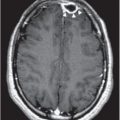| Clinical presentations | |||
|---|---|---|---|
| Species | Gastroenteritis | Wound infection | Septicemia |
| V. cholerae | |||
| O1 | ++ | + | + |
| O139 | ++ | + | |
| Other non-O1 | ++ | + | + |
| V. alginolyticus | + | ++ | + |
| V. carchariae | + | ||
| V. cincinnatiensis | + | ||
| V. damsela | + | + | |
| V. fluvialis | ++ | + | + |
| V. furnissii | + | + | |
| V. hollisaea | ++ | + | + |
| V. mimicus | ++ | + | + |
| V. metschnikovii | + | + | + |
| V. parahaemolyticus | ++ | ++ | + |
| V. vulnificus | + | ++ | ++ |
Gastroenteritis and cholera
Clinical presentation
Gastroenteritis is the most common clinical presentation of infection with most pathogenic vibrios. The disease ranges in severity from mild, self-limited diarrhea to frank, life-threatening cholera.
Cholera is a profuse, watery diarrhea mediated via an enterotoxin produced by epidemic strains of V. cholerae O1 and O139 and by some non-O1 strains. After attachment of toxigenic vibrios to intestinal epithelial cells, the cholera toxin, consisting of one A (activation) subunit and five B (binding) subunits, is generated. It stimulates intracellular cyclic AMP, resulting in a secretory diarrhea. Other symptoms include nausea, vomiting, abdominal cramps, and muscle cramps of extremities; fever is typically not seen because the disease is toxin mediated and there is no invasion of the intestinal epithelium. Illness develops 4 hours to 5 days after ingestion of the bacteria and can rapidly lead to severe dehydration, electrolyte imbalance, metabolic acidosis, and death. Cholera usually lasts less than 7 days even without antibiotic therapy.
Gastroenteritis due to vibrios other than V. cholerae O1 and O139 may also be mediated via an enterotoxin, but the diarrhea is normally not so severe. However, bloody stool, low-grade fever, and elevated white blood cell count may be noted along with nausea, vomiting, and abdominal cramps. The median incubation period is 1 day, ranging from 4 hours to 5 days, and the duration of illness is typically less than 7 days, ranging from 1 to 15 days.
Therapy
For cholera, prompt replacement of fluid volume and electrolytes with an appropriate intravenous or oral solution is critical. If the patient has severe dehydration (loss of at least 10% of body weight) or cannot drink, intravenous fluid replacement with Ringer’s lactate is recommended. Normal saline does not contain appropriate electrolytes to correct metabolic acidosis and is therefore not recommended. If the patient can drink, a solution containing glucose and adequate electrolyte replacement is recommended, such as those prepared with the oral rehydration salts (ORS) endorsed by the World Health Organization or commercially available ORS/electrolyte replacement solutions.
Treatment of cholera with antimicrobials is secondary to fluid and electrolyte replacement and recommended for patients with moderate to severe cholera. Appropriate antibiotics can decrease volume and duration of diarrhea, and shedding of vibrios. Multidrug-resistant strains of V. cholerae O1 have been documented in Asia and in Africa, and antibiotic susceptibility testing should be performed on isolates from cholera patients to inform drug choices. For most settings, a single dose of doxycycline (300 mg orally) for adults or a single dose of
Stay updated, free articles. Join our Telegram channel

Full access? Get Clinical Tree





